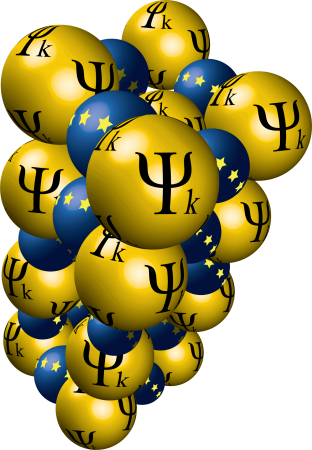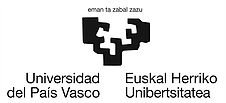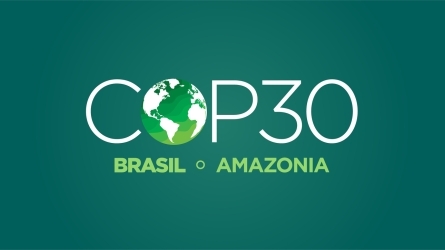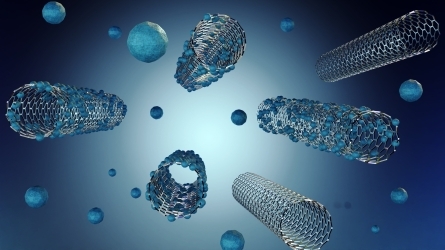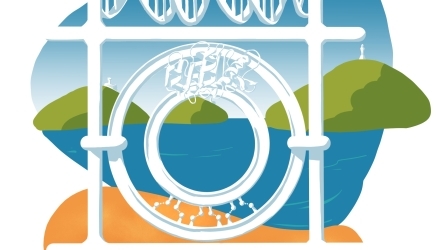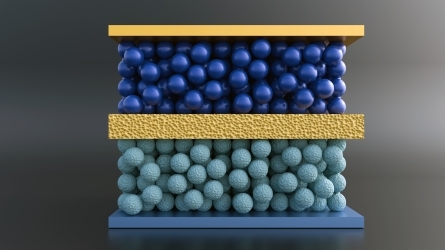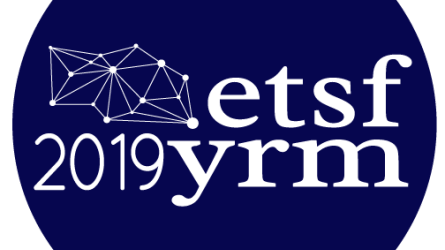
2019 ETSF Young Researchers Meeting
Azalpena
European Theoretical Spectroscopy Facility (ETSF) delakoaren Young Researchers’ Meeting (YRM) topaketaren helburua materialen propietate elektronikoak eta optikoak aztertzeko ikuspegi teoriko eta konputazional berriekin lan egiten duten eta beren karrerako lehen etapatan dauden ikertzaileen (master ikasleak eta doktoregaiak, eta doktorego ondoko ikertzaileak) urteroko bilera bat izatea da.
Topaketak beren lana partekatzeko, materialen propietateak deskribatzeko metodo teoriko aurreratuenak ezagutzeko, eta beren karrerako antzeko etapa batean dauden beste ikertzaile batzuekin ideiak trukatzeko eta harremanetan jartzeko aukera ematen die karrera hasieran dauden ikertzaileei. YRM 2019an ahozko bost saio egongo dira. Saio guztietako gaiek modelatze materialen propietateen ab initio ikuspegiak landuko dituzte. Lehenengo saioan sistemaren funtsezko egoerari buruz hitz egingo da, eta bigarrenean sistema atomiko, molekular eta egoera solidoko sistemen egoera eszitatuei buruz. Hirugarren saioan materialen bibrazio propietateei helduko zaie. Laugarren saioa hainbat eskalatako simulazioan zentratuko da, eta bosgarrena korrelazio handiko sistemetan.
Konferentziak poster saio bat ere bilduko du, zeinetan parte hartzaileetako batzuek beren lana euskarri grafikoan erakutsi eta beste ikertzaile batzuei azaltzeko aukera izango duten, baina modu informalagoan. Horretaz gain, industriaren saio bat ere programatu da, zeinetan mundu akademikotik industriara pasa diren pertsonek beren esperientziak kontatu eta industriak materialen fisikariekin eta zientzialariekin lotuta dituen premiei eta itxaropenei buruzko informazioa emango dieten parte hartzaileei.
Helburuak
Parte hartzaileei aukera ematea ikerketa ezagutu eta beren karrerako antzeko etapa batean dauden beste pertsona batzuekin hari buruz eztabaidatzeko.
Ikertzaile gazteei materia kondentsatuaren fisika teorikoari buruzko ikerketaren ikuspegi zabalago bat aurkeztea, eta panorama horren barruan beren ikerketaren testuingurua aurkitzen laguntzea.
Ikertzaile gazteei ahozko aurkezpenak egiteko trebetasunak garatzen laguntzea.
Materia kondentsatuaren fisika teorikoarekin loturiko metodo berri eta alternatiboei buruzko sarrera bat aurkeztea parte hartzaileei. Beren karrerarako bide alternatiboei buruzko informazioa eskaintzea.
Mundu akademikoaren eta industriaren arteko zubia indartzea.
Giro lagunkoi eta abegikorra sortzea karrerako fase berean dauden ikertzaileen artean truke zientifikoa ahalbidetzeko.
Lehentasuna ematea ahozko aurkezpenari lehenengo etapetan dauden ikertzaileen kasuan.
Konferentzia magistralak antolatzea, esperientziadun ikertzaile ez iraunkorren eskutik, arlo espezifikoetako abangoardiako ikerketaren ikuspegi orokor bat eskaintzeko, oztopo eta erronka nagusiez hitz eginda.
Industriaren saio bat programatzea non karreraz aldatu duten ikertzaile gazteek beren esperientziak partekatu eta zientzia aplikatuaren eta ingeniaritzaren eskaerak eta helburuak aurkeztuko dituzten.
ORGANIZING COMMITTEE
Maja Berovic, PhD Student, Scuola Internazionale Superiore di Studi Avanzati di Trieste - SISSA. Ruben R. Ferradás, Postdoctoral Researcher, Laboratoire de Chimie et Physique Quantiques, Toulouse, France.
Nahual Sorbino, PhD Student, Donostia International Physics Center, San Sebastián, Spain.
Dorde Dangic, PhD Student, Tyndall National Institute, Cork, Republic of Ireland.
Jarduera nori zuzenduta
- Profesionalak
Kolaboratzaileak
Zuzendariak

Nahual Sobrino Coll
DIPC / UPV, Física de Materiales
PhD student at Donostia International Physics Center. I belong to the Nano-Bio Spectroscopy Group and the European Theoretical Spectroscopy Facility network. I am interested in strong correlated systems, electrical and thermal transort and Density Functional Theory

Rubén Rodríguez Ferradás
Donostia Internationl Physics Center, Investigador Postdoctoral
I am PhD in Physics by University of Oviedo (Spain). I defended my thesis in February 2016. After that, I moved to Laboratoire de Chimie et Physique Quantiques in Toulouse where I am currently a Postdoctoral Researcher under the supervision of Arjan Berger and Pina Romaniello. The main topics of my research are Time-Dependent Current-DFT and magnetism in solid state systems.
Hizlariak

Francesco Belli
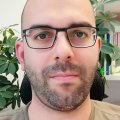
Miguel Caro
Aalto University
Miguel Caro is originally from a small town (Cartaya) in southwestern Spain. He graduated with a Physics degree from University of La Laguna, Tenerife, Spain. He then moved to Cork, Ireland, where he pursued a PhD in computational condensed-matter physics under Prof. Eoin O’Reilly at the Tyndall National Institute. His thesis work, for which he was awarded his PhD in 2013, focused on theory of III-N alloys, a material system widely used for optoelectronic applications. After the PhD, he moved to Finland, where he is a postdoctoral researcher at Aalto University since 2013 and Academy of Finland Postdoctoral Researcher since 2017. Dr. Caro’s current research interests concern the atomistic simulation of real materials, especially carbon-based materials, using a battery of simulation tools and methodologies, from density functional theory to machine learning.
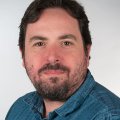
Aron Cohen
Max Planck Institute for Solid State Research
Max Planck Institute for Solid State Research, Stuttgard Aron Cohen received his Bachelor’s degree in Natural Sciences (Chemistry) from the University of Cambridge. He completed his PhD with Prof. Nicholas C. Handy before going to Duke University to carry out five years of postdoctoral research with Prof. Weitao Yang. In 2009 he returned to the University of Cambridge as a Royal Society University Research Fellow. He now works at the Max Planck Institute for Solid State Research in Stuttgart in the electronic structure theory group. His work focuses on the fundamental development of density functional theory and wavefunctions methods.
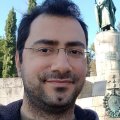
Manuel dos Santos Dias
Forschungszentrum Julich
Manuel Dos Santos did his undergraduate studies in Physics at the Faculty of Sciences of the University of Lisbon, from 2003 to 2007. He then moved to England, to work on his PhD under the supervision of Prof. Julie Staunton at the University of Warwick, from 2007 to 2011. Since 2011 he has been based at the Peter Grunberg Institut of the Forschungszentrum Julich, working with Prof. Samir Lounis. His field of expertise is in the theory of magnetism and its connection to the electronic structure of real materials. He has investigated the ground state properties of ferromagnets and other types of magnetic materials, both in bulk and in thin film form, and how they are influenced by the interrelation between the electronic and magnetic structures at finite temperature. More recently, he has focused on the properties of single magnetic atoms and small clusters on metallic surfaces, and on their dynamical magnetic excitation spectrum from time-dependent density functional theory.

Andrea Droghetti

Ion Errea
UPV/EHU
Ion Errea is an Associate Professor at the University of the Basque Country and leads the Quantum Theory of Materials group at the Centro de Física de Materiales. His research focusses on the development of theoretical methods for calculating complex properties of solids, such as quantum and anharmonic effects in atomic vibrations and the electron-phonon interaction, and the application of these methods in hydrogen-based superconductors, thermoelectric materials, phase transitions in solids, nanostructures, etc. He is an ERC grantee, research associate at the Donostia International Physics Center, and member of Jakiunde.
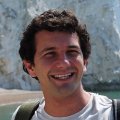
Aldo Isidori
Scuola Internazionale Superiore di Studi Avanzati di Trieste, SISSA
Aldo Isidori obtained his undergraduate Diploma in 2004 at the University of Rome, with a thesis on CP violation effects in supersymmetric extensions of the Standard Model for particle physics. He then moved to condensed matter physics during his PhD (2004-2008), also at the University of Rome, under the supervision of Profs. Massimo Capone and Claudio Castellani, working on analytical extensions of Dynamical Mean-Field Theory such as cluster and slave-particle methods. His first postdoctoral experience (2009-2013) was in Frankfurt (Germany), where he worked in the group of Prof. Peter Kopietz on functional renormalization group approaches to strongly correlated many-body systems. Later he moved to England for a second postdoc (2013-2016) at Royal Holloway, University of London, in the group of Prof. Matthias Eschrig, where he studied interface effects in superconducting heterostructures and phase transitions in graphite under strong magnetic fields. He is currently a postdoc at SISSA

Sara Isaline Laporte
Scuola Internazionale Superiore di Studi Avanzati di Trieste, SISSA
Sara Laporte graduated from the University of Auckland (New Zealand) with a double degree in Physics and Mathematics, before doing her Master's degree at Université Pierre et Marie Curie (UPMC) in Paris, specialising in condensed matter physics. She completed her PhD in 2016 also at UPMC, in the Institut de Minéralogie, de Physique des Matériaux et de Cosmochimie (IMPMC), working on the properties of water at mineral surfaces and its relevance to prebiotic chemistry. Currently she is a postdoctoral researcher at SISSA (Trieste, Italy), working on the multiscale simulations of optical properties of natural pigments, using a combination of molecular dynamics (both classical and ab-initio), enhanced sampling methods, and time-dependent density functional theory to computed excited stated and absorption spectra.

Cristina Muñoz Menéndez
Bardehle Pagenberg
Cristina Muñoz Menéndez did her undergraduate studies in Physics (2009-2013) at the University of Santiago de Compostela, Spain, to then pursue a Master (2013-2014) and a PhD (2014-2018) in Materials science, also in Santiago de Compostela. She spent her Erasmus year (2012/2013) at the Université du Maine, France, and she spent over nine months at the University of York, U.K. (2016/2017) under the supervision of Prof. Chantrell during her PhD. Her doctoral thesis, supervised by Prof. Baldomir and Dr. Serantes, consisted in performing simulations of the dissipated heat by magnetic nanoparticles in order to improve the effectiveness and the safety of magnetic fluid hyperthermia, a promising technique for cancer treatment. In November 2018 she started to work as a patent engineer at Bardehle Pagenberg’s office in Barcelona, Spain.

Elisa Rebolini
Institut Lau-Langevin
Elisa Rebolini is originally from the west coast of France. After finishing her undergraduates studies in Ecole Normale Supérieure de Cachan in chemistry and computer science, she joined the Laboratoire de Chimie théorique in Paris to work on her PhD under the supervision of Andreas Savin and Julien Toulouse (2011-2014) working range-separated density functional theory for the calculation of molecular excitation energies. Later she moved to the Centre for Theoretical and Computational Chemistry in Oslo where she worked with both Trygve Helgaker and Thomas Bondo Perdersen (2014-2017). Her main subject there was the development of coupled-cluster methods for periodic systems. Since september 2017, she joined the theory group of the Institute Laue-Langevin as a postdoc. She works with Marie-Bernadette Lepetit on the ab-initio treatment of magneto-electric tensors in strongly-correlated materials.
Asier Vicente
Arcelormittal
Asier Vicente received the BEng degree on mining engineering (2002) and in 2007 he received the MEng degree on Material engineering with Honors from the School of engineering of Bilbao and the MSc degree on industrial technologies by UNED (2016). Now he is developing his PhD work “New methods for Ferrous Raw Materials Characterization in Electric Steelmaking”. In 2002 he started at ArcelorMittal Sestao as steel mill shift manager, and in 2010 he moved to ArcelorMittal Basque Country R&D center, developing his work as principal investigator in the Electric steelmaking and Raw Materials characterization areas leading numerous projects in this area. Currently he is the head of the advanced steelmaking process technologies department in the Basque Country center. He also participates as an active member in several global technical committees within ArcelorMittal such as "ArcelorMittal Global expert technical committee" in the processes of electric arc furnace and secondary metallurgy.
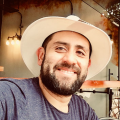
Mario Zapata
Donostia International Physics Center
Mario Zapata Herrera's background includes a degree in physics (2006) from the National University of Colombia (Bogotá), a master’s degree in Physical Sciences (2008) from Instituto Balseiro (Bariloche-Argentina), and a Master’s degree (2011) and a PhD (2016) in Physical Sciences from Universidad de los Andes (also in Bogotá). He later worked in the Theory of Nanophotonics Group led by Javier Aizpurua joined (from 2016 to 2018) at the Donostia International Physics Center (DIPC) of San Sebastian (Spain) and Currently (2018-). He is a Horizons 2020 fellow (postdoctoral researcher) at the Center for Research in Nano-Sciences CIC NANOGUNE also from San Sebastián (Spain) through an European grant and at the Francisco José de Caldas District University through the 784 call of Colciencias for postdoctoral stays.
Matrikula prezioak
| Matrikula | 2019-06-03 arte |
|---|---|
| 150,00 EUR | |
| 100,00 EUR | |
| 0 EUR |
Kokalekua
Carlos Santamaría Zentroa
Elhuyar plaza 2, 20018 - Donostia
Gipuzkoa
Carlos Santamaría Zentroa
Elhuyar plaza 2, 20018 - Donostia
Gipuzkoa
